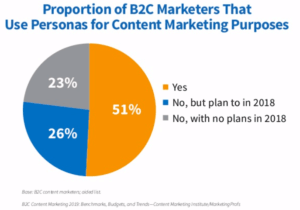
Top 100 Content Marketing Question: How do you develop a successful content marketing program in an organization?
How do you develop a successful content marketing program in an organization?
To develop a successful content marketing program:
- Avoid over-reliance on an agency’s “black box.”
- Pinpoint the exact problems buyers are trying to solve.
- Collaborate with stakeholders to co-create a mission, strategy, and message.
Here’s what I’ve learned from working with over 100 clients in content marketing workshops over the past 3 years:
Most clients are afraid they can’t develop a successful content marketing program on their own. That’s why they hire an agency to do content marketing for them.
In most cases, hiring an agency to do content for you is a big mistake.
1. Avoid over-reliance on an agency’s ‘black box.’
You absolutely can develop a successful content marketing program on your own! This website offers all the guidance and templates you need to develop a successful content marketing program.
Start by reading my free e-book, Fast-Forward Your Content Marketing.

Use my templates to create your own:
When it comes to content marketing, smart clients learn to catch fish themselves, rather than relying on an agency to catch their fish for them.
A good content marketing agency or consultant teaches you to catch fish by creating your own content. So you can feed your hungry audience with content on your own.
Too many agencies make content marketing into a secretive “black box” project. They download your knowledge and ideas, process them out of sight, and then come back to present you with magic fish.
As a result, you never have to learn to fish for yourself.
Content marketing goes much further when you involve everyone in your organization collaboratively, rather than relying on outside experts to bring you content.
Thirty years on the client side, working with various marketing and PR agencies, led me to the conclusion that clients must learn to fish.
Indeed, more and more clients are creating and building in-house agencies, the Association of National Advertisers (ANA) finds.
In his blog, Mike Brown at Brainzooming points out the problems with relying on the agency black box approach:
“Outside strategy partners … wanted to maintain a black box approach, however, sucking all the information from us, then retreating by themselves to dream up ‘creative’ branding ideas. We wasted significant time briefing agencies on our strategy only to find our knowledge about customers and markets didn’t translate to the branding work they presented. Then, we’d have to redo what they’d done.”
Like Mike, after decades on the client side, I learned the hard way that:
- Client-side marketers too often undervalue what people in the company already know.
- Clients underestimate how big a struggle it is for agencies to capture the understanding clients already have.
- Clients spend too much time trying to teach the agency their business – instead of learning from the agency how to do better marketing.
- To get the job done right, clients wind up doing the agency’s work over and over.
After years of struggling to make one ad agency successful, I brought the work in-house. Later the agency head admitted to me: “You know, no matter how hard we tried over the years, we never really understood your business.”
2. Pinpoint the problems buyers are trying to solve.
Great content marketing is more about your customer’s information needs than about your brand. That’s what distinguishes content marketing from other forms of marketing.
Two-thirds of marketers take a customer-centric approach to content, the 2019 Content Marketing Institute research found:

By keeping customers at the center of content marketing, clients can develop a successful content marketing program – with or without an agency. That’s because:
- Subject-matter experts inside your organization know your business, customers, and key topics better than an agency.
- Market researchers, sales, and customer service know more about your customers’ specific questions and nagging problems than an agency.
- By collaborating to develop a successful content marketing program, you get deep buy-in from your organization and a much higher likelihood of success.
Keep the needs of customers, buyers, and prospects at the center of your content marketing program:
- What problems are they trying to solve?
- What questions and pain points nag them?
- Where do they turn for authoritative information about their questions?
- Which content does your company need to create to become the best source of information for your customers?
To gain deep insights into customers’ exact needs, perform buyer persona research. Talk directly to customers to get insights about what they do during the buying process.

Too many “buyer personas” are invented from marketers’ imaginations. Real buyer persona research captures customers’ exact words through interviews.
Most marketers rely on indirect methods of listening to customers: social media listening, website analytics, keyword research and database analysis. But buyer persona research is different – it’s a one-to-one dialogue with 10 or 12 customers.

Do Real Buyer Persona Research
Real buyer persona research gives you insights into what buyers do before they call sales when they’re offstage and out of sight. For more detail on buyer personas, see this blog.
While more than half of marketers claim to use buyer personas, fewer than half do primary research. That doesn’t compute!
If you don’t do real buyer persona research, your buyer persona is a figment of marketing imagination, a castle built on sand.

Lots of buyer personas are just made up, as Konrad Sanders writes in the Content Marketing Institute blog. They include useless, frivolous information that provides no meaningful insight into buyers’ needs and actions.
Your buyer persona drinks Earl Grey tea, Sanders writes.
So what? How will that make any difference to your content marketing?
Worse, too many so-called buyer personas omit the crucial information you actually need to create on-target content marketing.
3. Collaborate with stakeholders to create a content marketing mission, strategy, and message.
One of the toughest parts of content marketing is getting people in your company to buy into the idea that customers’ needs come before your brand’s needs.
That’s why you need to build a big tent, inviting all your stakeholders to collaborate on your content marketing mission, strategy, and message.
Two out of three marketers lack a written content marketing strategy, the 2019 CMI research found. This proportion hasn’t changed over many years.

That’s a shame because having a written strategy makes you 4 times more successful than marketers who lack a written strategy, Joe Pulizzi observed.
Why do marketers avoid writing down their content marketing strategy?
Because they imagine needing to create a 2-inch marketing strategy binder, just as they have to do every year. Then filing it on a shelf and ignoring it until next year.

They imagine creating a content marketing strategy is too hard. In fact, you can co-create your content marketing mission, strategy, and message in a one-day workshop.
To get this work done, use the blogs and templates I offer on this website. Or call me to facilitate your one-day workshop.
Here’s how to:
- Frame a content marketing mission
- Write a one-page content marketing strategy
- Co-create a Message Map.
The top benefit of writing your content marketing mission and strategy together with all your stakeholders is that you get deeper buy-in to content marketing. You get more understanding, cooperation, and support as you need it.
You also gain focus and find it easier to choose which content to develop. These findings come from the CMI 2019 research:

Here’s how to take the big tent approach to create your mission, strategy, and message.
To develop a successful content marketing program:
- Avoid over-reliance on an agency’s “black box.”
- Pinpoint the exact problems buyers are trying to solve.
- Collaborate with stakeholders to co-create a mission, strategy, and message.
“How do you develop a successful content marketing program within an organization?” is one of marketers’ Top 100 Questions on content marketing. Here are the answers.

You may find these related blogs useful:
Blog: How do you start a content marketing program from scratch?
Blog: Where to begin your content marketing? 3 ideas
Related Posts
Top 100 Content Marketing Question: How do you start formulating a content marketing strategy?
It’s one of the top 100 questions that marketers ask about content marketing: How to formulate a one-page content marketing strategy? The good news...
84 Questions to Spark Your Business Story
To ignite your story, start with the right questions When I work with clients to co-create their business story, we start with questions about customers...
How to move buyers from awareness to action
Awareness of the need for change is the first step in persuading people to act. In good news, awareness is the easiest step in...
52 Insights to Spark New Marketing Ideas
Fresh Ideas on Storytelling, Disruption, Messaging, Customers, Content & Analytics Business Marketing Association (BMA) conferences convened hundreds of B2B marketers and marketing thought leaders....





